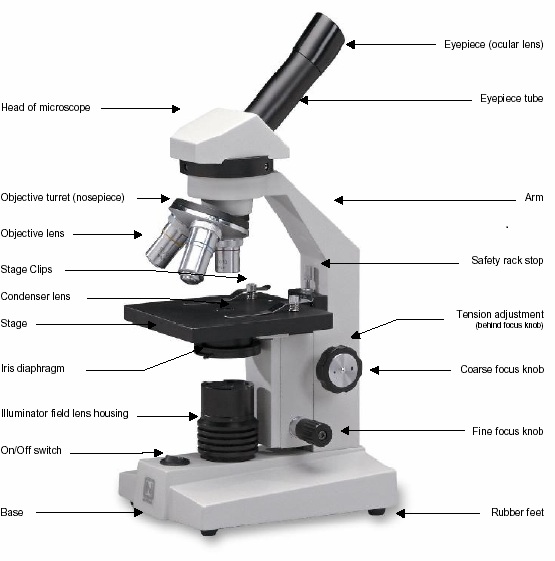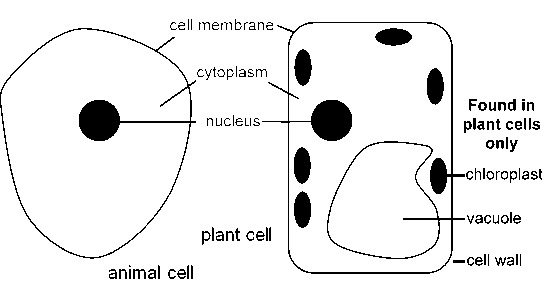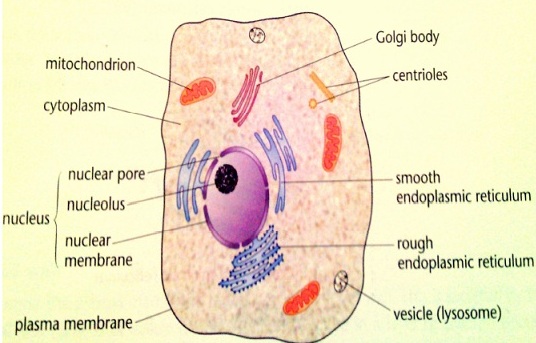- In 1650,
Zacharias Jansen invented the compound microscope which combines two lenses for greater magnification.
- In 1665,
Robert Hooke used an improved compound microscope to observe cells.
- Between 1650 and 1700,
Anthony Van Leewenhoeck developed a better microscope with lenses which provided a greater magnification. He used the microscope to view nuclei and unicellular organisms including bacteria.
- The development of the electron microscope in 1930s significantly improved microbial studies. Through this microscope, it was possible to study very finer details of structures.
Light Microscope
- This is the most commonly used microscope in schools and institutions that do not focus on very fine details of the internal structures of cells.
- The light microscope uses a beam of light to illuminate the specimen being studied.
- A microscope is a delicate and expensive instrument that should be handled with care. It is imperative to understand the parts and functions of various parts of a microscope.
- In a light microscope, the eye piece and the objective lenses both contribute to the magnification of the specimen.
- The total magnification of the specimen viewed under a light microscope will be given by:
Magnification = Eyepiece Lens magnification x Objective Lens Magnification
In particular, if the eyepiece lens magnification is X10 and objective lens magnification power is X8, then the total magnification of the specimen would be:
Magnification = Eyepiece Lens magnification (x10) x Objective Lens Magnification (x8)
= 10 x 8
= X80

| Parts of the Microscope |
Function of the part |
| Limb |
Supports the body tube and stage |
| Base |
Provides firm and steady support to the microscope |
| Body tube |
Holds the eyepiece and the revolving nosepiece |
| Coarse adjustment knob |
Raises or lowers the body tube for longer distance to bring the image into sharper focus |
| Fine adjustment knob |
Raises or lowers the body tube for smaller distance to bring the image into sharper focus. It is mostly used with high-power objective lens. |
| Diaphragm |
An aperture that regulates the amount of light passing through the condenser to illuminate the specimen. |
| Eye-piece |
Contains a lens which contributes to the magnification of the specimen under view. |
| Objective lens |
Brings image into focus and magnifies it. |
| Mirror |
Reflects light through the condenser to the object on the stage. |
| Revolving nosepiece |
Holds the objective lenses in place and enables the change from one objective lens to the other. |
| Condenser |
Concentrates light on the object on the stage |
| Stage |
Flat platform where the specimen on the slide is placed. It has two clips to hold the slide into position. |







